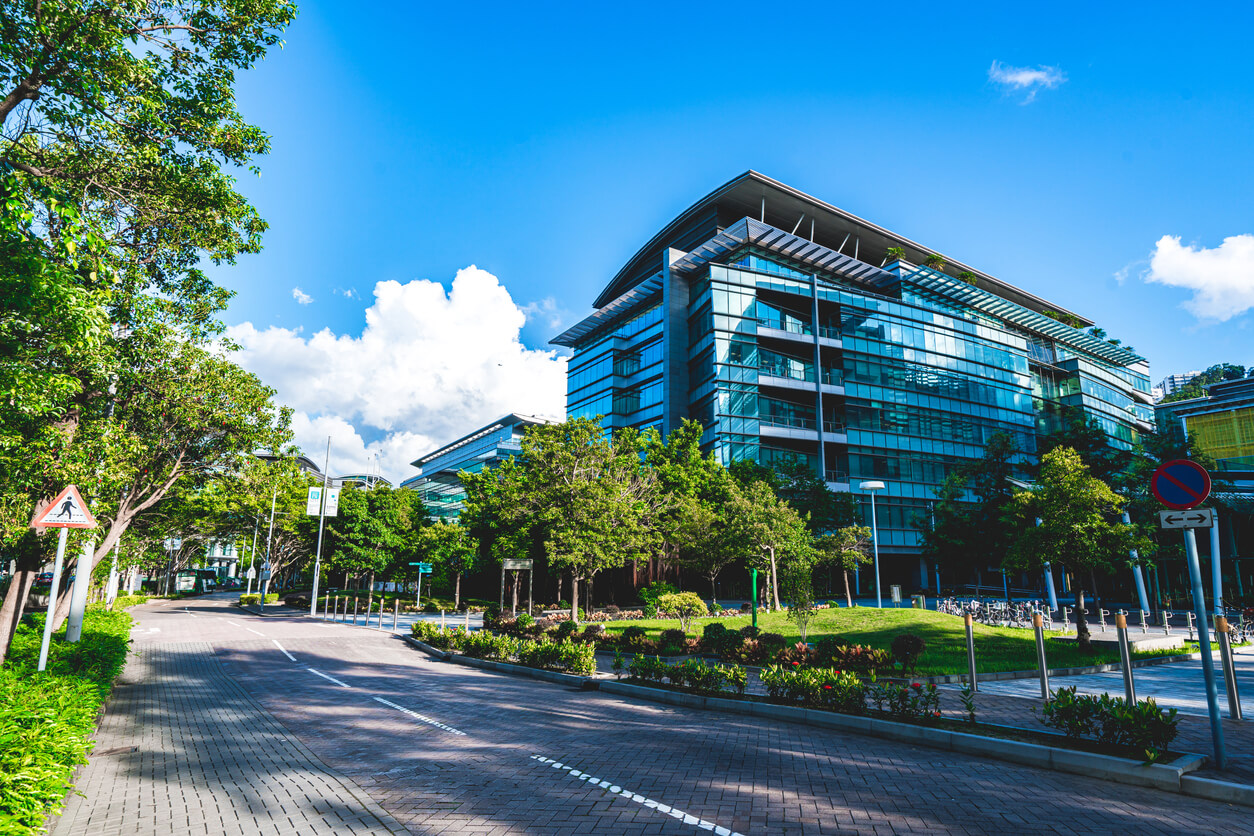Are you new to investing in commercial real estate? If so, we would like to provide this entry-level investing guide, which will help you learn about the different types of commercial real estate properties.
While official classifications can vary, commercial real estate can generally be subcategorized into eight categories.
Types of Commercial Real Estate
Technically commercial real estate can be described as anything that isn’t residential real estate. However, we would like to help those getting started in commercial real estate investment by offering this primer.
We’ll explore the different types of commercial properties, commercial buildings, and land use types and give you examples of each asset class.
Multifamily Residences
Those already earning rental income from the residential property market may naturally transition into investing in multifamily residences.
The multifamily asset class includes everything from a duplex to a large apartment building.
“Plex” Properties
The “plex” property types (duplex, triplex, quadplex) are found in almost every market – from suburban to urban areas. Some investors use one of the units as their own residence while renting out the other units to generate income. Plex properties make excellent student housing.
Garden Apartments
The multifamily asset class also includes apartment buildings.
One type, garden apartments, are typically three to four stories. Although they can be found in many different areas, they became popular in the suburbs in the 1960s and 1970s.
Garden apartments (or low-rise apartment buildings) are typically located on one tract of land. The apartments usually require no elevators, and the surrounding land is used for a shared yard and parking spaces.
Mid-Rise Apartments
Mid-rise apartments are typically 5-12 stories, which means that elevator service is required to access the multiple units.
High-Rise Apartments
High-rise apartments are found in larger markets. They range from 10 to 40 stories. These professionally-managed properties typically have over 100 units.
Offices
Commercial real estate includes office buildings, which are subcategorized based on the building’s size, condition, and location.
Class A, B, or C
Office space is loosely labeled into one of three categories– Classes A, B, or C.
Class A office buildings are typically the best – in terms of the construction of the office spaces and the location. Class B office buildings may still have high-quality construction, but the structure might be located in a less desirable area. Finally, Class C office buildings still have worth as commercial property, but they aren’t as highly regarded as the other categories.
These classifications are dependent upon the location of the building and the health of the market.
Central Business District Office Space
Central business district office buildings are located in the heart of a major city. Offices in a city’s CBD are often in a high-rise building or skyscraper.
Suburban Office Space
Suburban office buildings are typically mid-rise structures of approximately 80,000 to 400,000 square feet that are located outside of a central business district.
Suburban office parks are multiple buildings within the same campus.
Industrial
Industrial buildings can be further categorized by the size and use of the property. Here are the types of industrial properties:
Heavy Manufacturing
A heavy manufacturing industrial building is highly customized to meet the user’s needs. Therefore, this type of property typically requires substantial renovation to prepare for the next tenant.
Light Assembly
Unlike heavy manufacturing facilities, a light assembly industrial space can change purposes quickly. This category typically includes product assembly space, office space, and storage.
Bulk Warehouse
A bulk warehouse is large and may be used for regional distribution centers. Unlike smaller facilities, bulk warehouses require easy highway access.
Retail
One of the other main categories for commercial real estate investors is the retail sector. Here are some of the subcategories of retail properties.
Strip Mall / Shopping Center
A strip mall is a commercial space that may or may not include an anchor tenant, such as a large department or warehouse store. While shoppers may visit the area to shop at the anchor tenant, they may also spend money at the smaller retailers in the area, such as liquor stores, dry cleaners, and small restaurants.
Community Retail Center
Community retail centers may have several anchor tenants, such as a grocery store and a drug store. Additionally, the area might include smaller commercial leases for restaurants or specialty shops.
Power Center
Power centers typically have several smaller retail stores but are distinguished by the presence of several major retailers such as Wal-Mart, Lowes, or Target.
Power centers may also include several out parcel buildings.
Regional Mall
Malls or shopping centers have a handful of department store anchor tenants or big-box retailers.
Out Parcel
Near larger retail centers, parcels of land are set aside for individual tenants. These may include fast-food restaurants, tire suppliers, or banks.
Hotels
Don’t overlook hotels as you consider commercial real estate investing.
Full-Service Hotels
Full-service hotels are usually located in tourist areas or business districts.
Limited Service Hotels
Limited-service hotels are smaller than full-service hotels. They typically don’t have extensive banquet facilities, meeting rooms, or room service.
Extended Stay Hotels
Extended stay hotels are designed for people staying a week or more. They have larger rooms and small kitchens.
Mixed-Use Properties
In urban, and suburban areas, you might find properties that can best be described as mixed-used properties. For example, high-rise buildings with offices, residences, and retail spaces are examples of mixed-use properties.
Land
Land is also included in the commercial real estate market.
Agricultural Land
Agricultural land may be used for field crops, orchards, or vineyards. This category also includes pasture land, ranches, and more.
Infill Land
Infill land refers to the rededication of land in an urban setting to new construction. In other words, infill land had previously been used within a city, but now the space is ready for new development.
Brownfield Land
Brownfield land refers to properties used in industrial real estate or commercial real estate but is now available for new development.
Special-Purpose
You may find a commercial property that is difficult to categorize. These special-purpose commercial properties may include amusement parks, parking lots, or stadiums.
Seeking Expert Advice on Commercial Real Estate Investment? Consult with Frontera Capital Partners
Are you looking for a real estate investment? Contact Frontera Capital Partners.
There’s a great deal to learn about commercial real estate, whether you are interested in investing in multifamily properties, undeveloped land, or buildings with industrial or commercial purposes. The Frontera team will be happy to answer any questions you have about the commercial real estate industry and can advise you of exciting new investment opportunities.
Contact Frontera Capital Partners at (512) 887 1357 to schedule a consultation.





